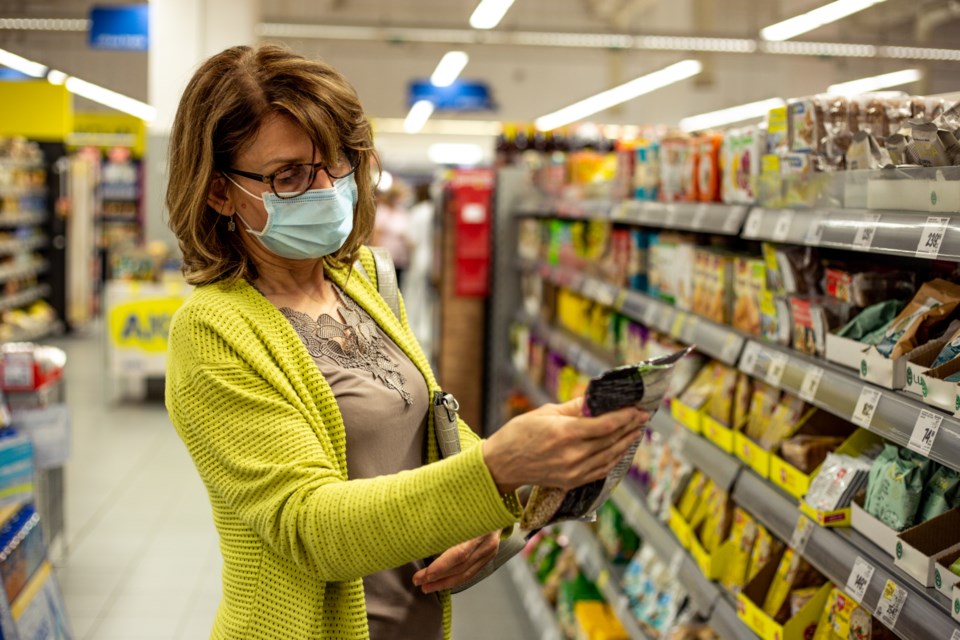In only five months, we’ve learned of the myriad effects the disease has on those who catch it — from virtually asymptomatic, to mild flu-like symptoms, to crippling fever and pain, to respiratory damage so severe it requires respirator support, to life-long difficulties from the damage caused, and yes, even sudden death.
And in that same time, we’ve learned how to prevent the spread and mitigate the damage.
The basics include hand sanitation, social distancing and isolation if you have symptoms. Full quarantine if you contract the disease. Constant medical support and intervention is required through the entire process.
But one simple item has emerged as the largest public front-line weapon in the battle against COVID-19.
The face mask.
From a simple medical mask you can buy in bulk at any store, to a cloth mask or face covering with colourful graphics, the prevalence of covering your mouth and nose in public has grown exponentially alongside the growth of the disease, as more and more people decide health and safety of themselves and those around them is of utmost importance.
But issues have arose.
A Moose Jaw Express reader recently called in asking if masks were effective, because she had heard from other sources and social media that they weren’t, and may even worsen the disease.
Anyone who has used Facebook or Twitter will have read and heard the same, multiple times from multiple sources.
And in every case, universally, it’s straight-up bunk.
“It’s not that they don’t work or they do work. They do work, the evidence is very, very clear,” said Dr. Lanre Medu, medical health official with the Saskatchewan Health Authority. “They work particularly well in areas where you aren’t able to maintain distance of six feet from one another and they work best when they’re used consistently.
“Beyond that, it’s just one part of the whole. You have mask use and you’re pairing with good hand hygiene in addition to that. Then if you’re working in a congregated setting, if you’re sick, stay home. Those are three components that are important, and if you’re sick, you should perhaps not go into areas where you can’t maintain the minimum distance. If you can’t maintain that six feet, then it’s advisable to wear a mask and still use good hand hygiene at all times. So it’s a package deal, not just one part.”
The Centers for Disease Control and Prevention offer a further explanation as to how facial coverings of all types work to prevent the spread of disease.
“COVID-19 spreads mainly from person to person through respiratory droplets produced when an infected person coughs, sneezes, talks, or raises their voice (e.g., while shouting, chanting, or singing). These droplets can land in the mouths or noses of people who are nearby or possibly be inhaled into the lungs. Recent studies show that a significant portion of individuals with COVID-19 lack symptoms (are “asymptomatic”) and that even those who eventually develop symptoms (are “pre-symptomatic”) can transmit the virus to others before showing symptoms.
“To reduce the spread of COVID-19, CDC recommends that people wear masks in public settings when around people outside of their household, especially when other social distancing measures are difficult to maintain.”
The level of protection provided depends on the type of mask worn, as Dr. Medu explained.
Cloth masks, both homemade and industrial manufactured, have varying levels of protection, but all offer some protection — a level that varies from around 35 per cent to 85 per cent of potential spread of droplets. The now-famous N95 masks take that to another level, with the ‘95’ referring to their ability to filter 95 per cent of particulates in the air.
But the key point is, when protection is needed, something is better than nothing.
“It’s impossible to judge how all cloth masks perform, if you made it or a company made it, you don’t know, they could fall anywhere in that spectrum,” Dr, Medu said. “But even at the low end, that’s better than no mask at all.”
While it would be easy for medical professionals to become frustrated with the deluge of misinformation and outright lies surrounding masks and almost every aspect of COVID-19, they rely on one key factor.
Education, and getting the message out as much as possible.
“We know one of the best sources of information we have is education,” Dr. Medu said. “This is what the information is and addressing it through different modes of information and sharing the information that it does work and showing evidence is what’s important.”
And as word gets out and the public becomes more aware, masks will become more prevalent. In the end, the hope is simple knowledge will be enough to overwhelm the misinformation, especially should a time come when wearing masks in public becomes all-important.
“What we know compared to a few months ago, even right now we see more people wearing masks,” Dr. Medu said. “It’s not common or usual that we wear masks, but we need to get to the point that we all know that masks work and we’re confident wearing them.”




